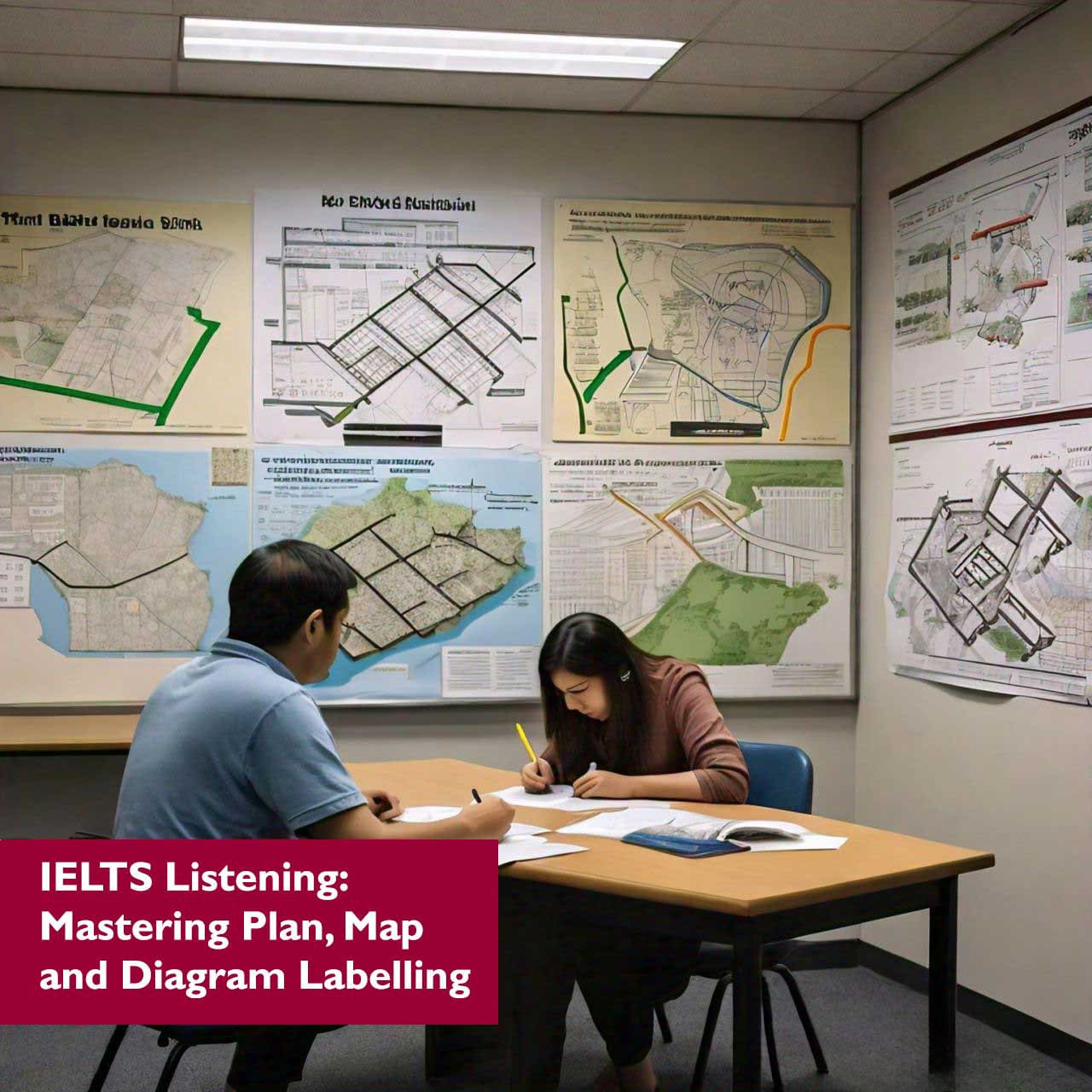The IELTS Listening test is a critical part of the IELTS exam, designed to evaluate your ability to understand spoken English in various contexts. Among the diverse question types, plan, map, and diagram labelling can be particularly challenging for many test-takers. These questions require you to follow spoken instructions and label visual representations accurately. Here’s a comprehensive guide to mastering plan, map, and diagram labelling in the IELTS Listening test.
Table of Contents
Understanding the Task
Plan, Map, and Diagram Labelling
In these question types, you will be given a visual representation such as a floor plan, a map, or a diagram. Your task is to listen to the recording and label specific parts based on the information provided. The recording will guide you through the visual, describing locations, directions, or features that you must identify and label correctly.
Common Contexts
– Plans: Layouts of buildings, rooms, or other structures.
– Maps: Street maps, campus maps, or park layouts.
– Diagrams: Mechanical or process diagrams, illustrations of objects, or instructional graphics.
Strategies for Success
1. Familiarize Yourself with the Visual
Before the recording begins, take a moment to study the plan, map, or diagram. Note any labels already provided, identify the key features, and understand the general layout. Look for clues such as titles, symbols, and scale indicators.
2. Pay Attention to Directions and Spatial Language
The recording will often include directions and spatial language to guide you. Listen carefully for phrases such as:
– Directions: “Turn left,” “Go straight,” “To the north,” “Next to,” “Across from.”
– Spatial Relationships: “Above,” “Below,” “Beside,” “In front of,” “Behind.”
3. Use the Order of Information
The information in the recording is typically presented in the order that you need to label the visual. Follow along with the audio and label the parts as they are described. This sequential approach can help you stay on track and avoid confusion.
4. Practice Active Listening
Active listening involves concentrating fully on the recording and visual simultaneously. Try to visualize the descriptions in your mind as you hear them. This technique helps to reinforce your understanding and improve accuracy.
5. Note Keywords and Synonyms
The recording may use synonyms or paraphrased descriptions instead of exact words from the visual. For example, “entrance” might be referred to as “door” or “entry point.” Be prepared to identify these variations.
6. Predict Possible Answers
Based on your initial scan of the visual, try to predict what kind of information you will need to listen for. This anticipatory approach can make it easier to recognize the correct answers when they are mentioned.
7. Stay Calm and Focused
It’s easy to become overwhelmed if you miss a part of the recording. If this happens, stay calm and move on to the next point of reference in the visual. Do not dwell on missed information, as it can cause you to lose focus on subsequent details.
Practice Exercises
Example 1: Labelling a Room Plan
Visual: A floor plan of a conference room with labeled features like “entrance,” “stage,” and “exit.”
Recording Excerpt: “As you enter the room, you will see the registration desk directly opposite the entrance. To the left of the registration desk, there are restrooms. The seating area is arranged in front of the stage, which is at the far end of the room.”
Answer Guide:
– Registration Desk: Directly opposite the entrance.
– Restrooms: To the left of the registration desk.
– Stage: Far end of the room.
Example 2: Labelling a Park Map
Visual: A park map with a lake, playground, picnic area, and entrance.
Recording Excerpt: “From the main entrance, if you walk straight ahead, you will reach the playground. The lake is situated to the left of the playground. The picnic area is located between the lake and the playground.”
Answer Guide:
– Playground: Straight ahead from the entrance.
– Lake: To the left of the playground.
– Picnic Area: Between the lake and the playground.
Final Thoughts
Mastering plan, map, and diagram labelling in the IELTS Listening test requires a combination of careful preparation, active listening, and strategic thinking. By familiarizing yourself with the visual beforehand, paying close attention to directions, and practicing regularly, you can enhance your ability to accurately label visual information. Remember, practice makes perfect, so use a variety of resources and practice materials to hone your skills. With dedication and focus, you can tackle these questions confidently and improve your overall listening score. Good luck!



